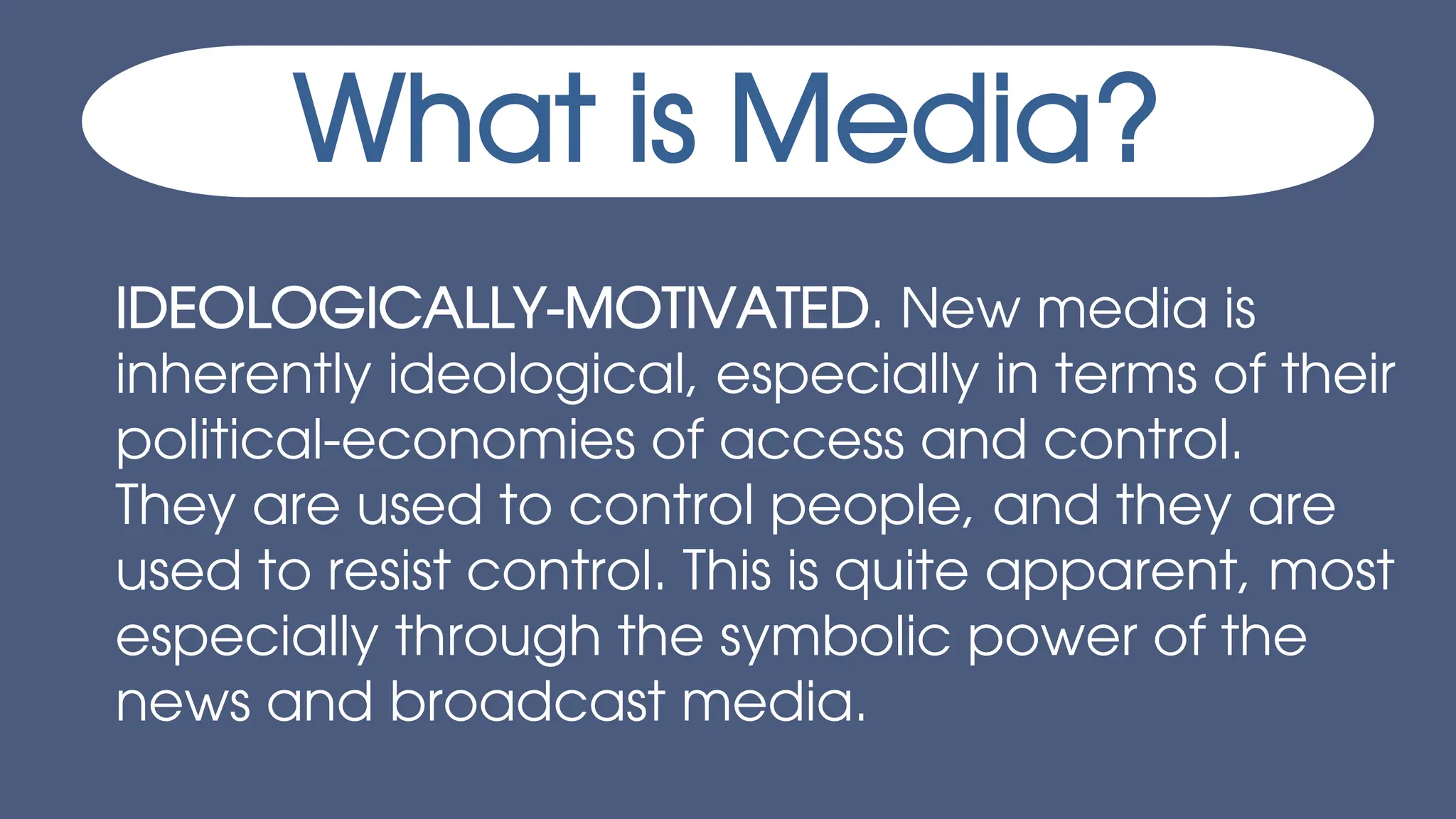The document discusses the evolution and impact of social media and new media technologies on communication strategies and language use. It emphasizes the need for responsible social media usage and outlines key practices for effective communication planning, as well as the importance of adapting communication styles to modern platforms. Additionally, the document highlights the trends in social media usage statistics and the transformation of language in the digital era.

























































